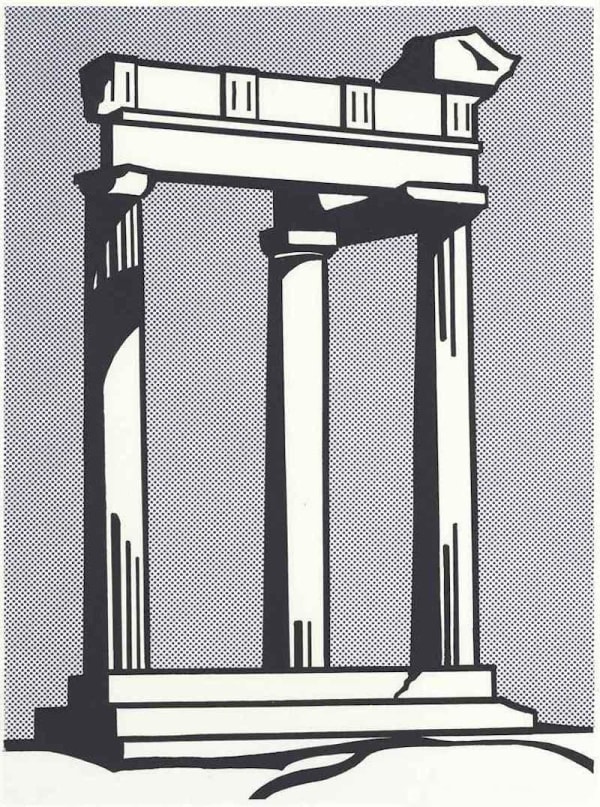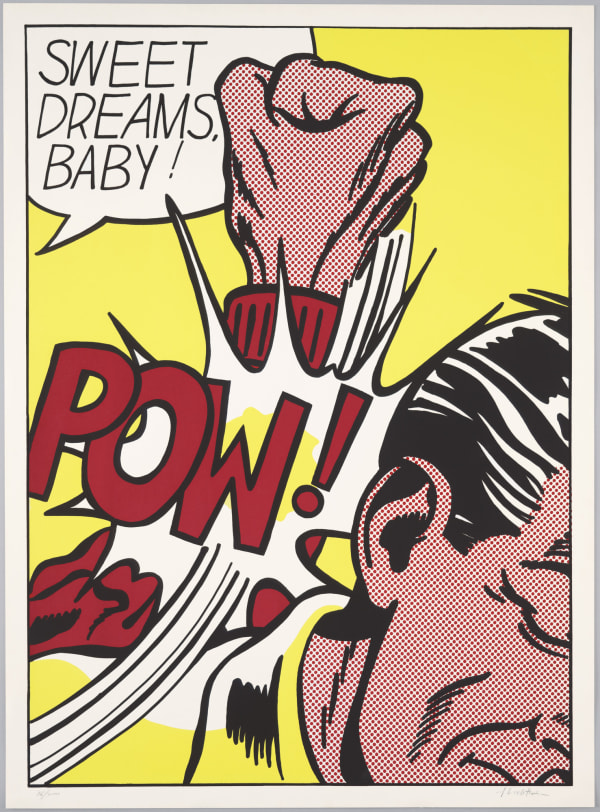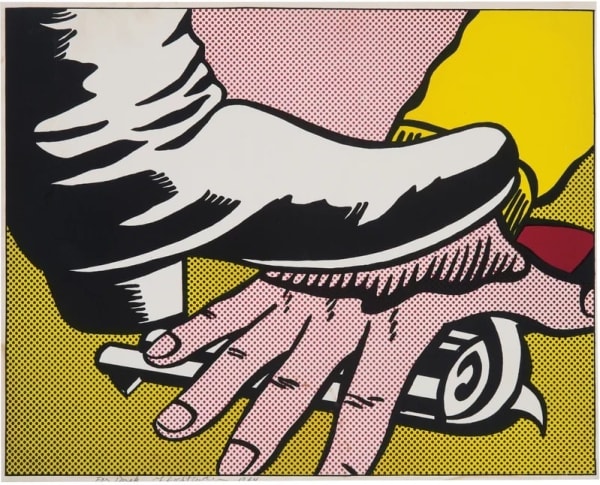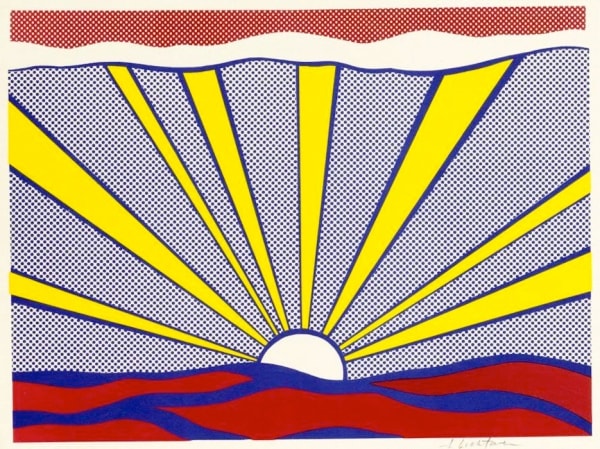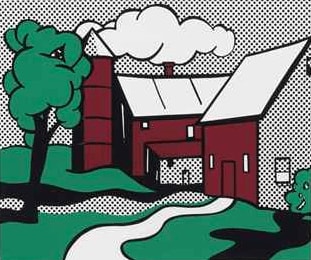
Roy Lichtenstein
45.7 x 68.6 cm
Roy Lichtenstein's Crak print is a bold and dynamic representation of his iconic pop art style. Created in 1963, this artwork is emblematic of Lichtenstein's exploration of popular culture and consumerism, as well as his fascination with the visual language of comic books.
At first glance, Crak appears to depict a dramatic scene of explosive action, with jagged lines and dynamic shapes dominating the composition. The word Crak is rendered in bold, capital letters, evoking the sound of a loud explosion or impact. Surrounding the text are bold, diagonal lines and geometric shapes, creating a sense of movement and energy that propels the viewer's eye across the canvas.
What sets Crak apart is Lichtenstein's use of Ben-Day dots, a printing technique commonly used in comic books, to create texture and depth. The dots, arranged in precise patterns and varying sizes, add a layer of visual interest to the composition, giving the artwork a sense of dynamism and vibrancy.
Moreover, Crak can be seen as a commentary on the pervasive influence of violence and aggression in popular culture. By appropriating imagery from comic books and recontextualizing it within the realm of fine art, Lichtenstein challenges viewers to reconsider their perceptions of violence and its portrayal in the media.
In addition to its conceptual depth, Crak is visually striking and aesthetically compelling. The bold colors, dramatic composition, and dynamic lines create a sense of visual tension and excitement, drawing the viewer into the heart of the action.
Overall, Roy Lichtenstein's Crak print is a powerful example of his ability to transform familiar imagery into iconic works of art. Through his innovative use of color, composition, and printing techniques, Lichtenstein invites viewers to reconsider their understanding of art and popular culture, while also celebrating the visual language of comic books.
-
 Roy LichtensteinNew Seascape (C. 42), 1966
Roy LichtensteinNew Seascape (C. 42), 1966 -
 Roy LichtensteinMoonscape C. 37, 1965
Roy LichtensteinMoonscape C. 37, 1965 -
 Roy LichtensteinTemple (C. II 3) , 1964
Roy LichtensteinTemple (C. II 3) , 1964 -
 Roy LichtensteinSweet Dreams Baby (C.39), 1965
Roy LichtensteinSweet Dreams Baby (C.39), 1965 -
 Roy LichtensteinReverie (C. 38), 1965
Roy LichtensteinReverie (C. 38), 1965 -
 Roy LichtensteinShipboard Girl (C. II 6), 1965
Roy LichtensteinShipboard Girl (C. II 6), 1965 -
 Roy LichtensteinFoot And Hand (C. II 4), 1964
Roy LichtensteinFoot And Hand (C. II 4), 1964 -
 Roy LichtensteinCrying Girl (C. II 1), 1963
Roy LichtensteinCrying Girl (C. II 1), 1963 -
 Roy LichtensteinSunrise (C. II 7), 1965
Roy LichtensteinSunrise (C. II 7), 1965 -
 Roy LichtensteinRed Barn (C.89), 1969
Roy LichtensteinRed Barn (C.89), 1969
Join our mailing list
* denotes required fields
We will process the personal data you have supplied in accordance with our privacy policy (available on request). You can unsubscribe or change your preferences at any time by clicking the link in our emails.
This website uses cookies
This site uses cookies to help make it more useful to you. Find out more about cookies.


